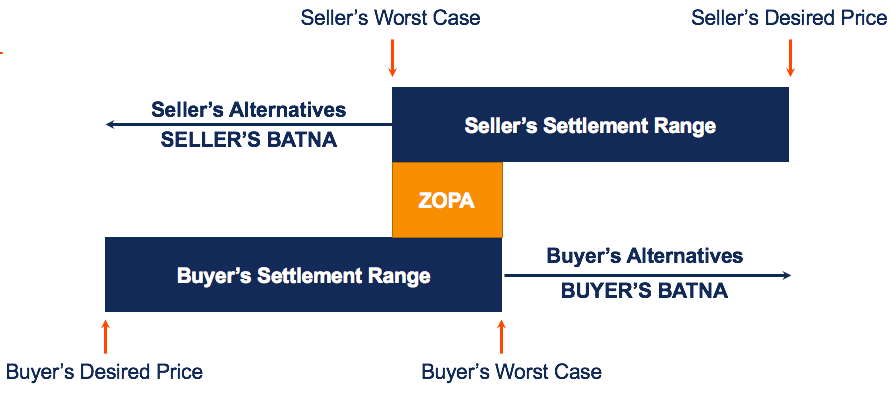When I learned about “Getting to Yes” (Ury & Fisher from Harvard), it was at Merger Week at Northwestern in the early 2000s. Along with financial recasting, legal and accounting instruction were mock negotiating sessions where we were paired at random with a person to negotiate a deal. Each of us received a set of facts about our situation (of course, they aren’t the same!). The object was to get the best possible deal.
My classmates were from all over the world and worked in M&A, private equity, banks, consulting firms and corporations. During Merger Week, you stay on campus in a building reserved for executive education for the week and spend all your time together—learning, meeting, eating, hanging out and working the entire time. To prepare, there is a lot of pre-work to bring everyone up to a baseline before they start.
This was BEFORE Chris Voss’ 2016 best-selling Never Split the Difference. Chris refers to the old classic of negotiating “Getting to Yes” by Roger Fisher and William Ury (1981) However, he believes that using “win win”, BATNA and ZOPA concepts encourage negotiators to accept less than their best outcome. Voss encourages negotiators to prepare and plan, but set an expectation for a BEST CASE result rather than just a worst case. In so doing, you don’t psychologically “give in” to anything above the BATNA.
For example, you have found a used car you’d like to buy and the price is listed at $25,000. That sounds ok, but you decide to check the comparables. Blue Book for the most similar vehicle available near you is only $20,000 for a version that has similar features. You begin negotiating with the Seller from that perspective. Your ZONA is between $20k and $25k. If you can’t reach an agreement with him within that range, you should “close your briefcase” and move on to your alternative. This is helpful, but in this case, you have alternatives. Chris Voss negotiated for the FBI in hostage situations, so he his “worst case” might have been the unacceptable death of a hostage. Can’t really close the briefcase and walk away when lives are on the line. His focus includes the all-important psychological aspects of negotiating techniques.
Looking back, I recall that a few of my classmates were unable to reach a deal and I think it was a case of different personalities not “hearing” each other. When we unraveled our results in class, we found that in those cases, one side just wasn’t open to any form of negotiating besides getting it all. (By the way, these deals were complex with many moving parts.). In one case, the “correct” solution was that the two should not have reached a deal. In other cases, the Seller gave away too much. Even those of us who had plenty of experience negotiating found it fascinating to see these results. You think you know what the outcome would be but then you’d see the dynamics between the pairs and how personality and temperament contributed to deal-making negotiations.
How can this help you? How many times a day do you negotiate something—from dealing with your teenagers to buying or selling your company, improving your negotiating skills will help you. The more you know about your partner’s temperament and the facts of the deal, the more effective you can be. A good business advisor will help you (whether you are buying or selling) flesh out what your alternatives are and, if engaged, will negotiate on your behalf.
If you haven’t read Chris Voth and Tahl Raz’s Never Split the Difference – Negotiating As If Your Life Depended On It, you should! It is an enjoyable read, full of great stories and examples with techniques you can put to work in your life immediately.
If you would like to discuss your situation on a confidential basis, please do call Alison at 224-688-8838 or email me at [email protected]. We’re here to help you Harvest Your Potential.
And in case you are interested: Here is an illustration of BATNA and ZOPA.
Credit: Corporate Finance Institute

